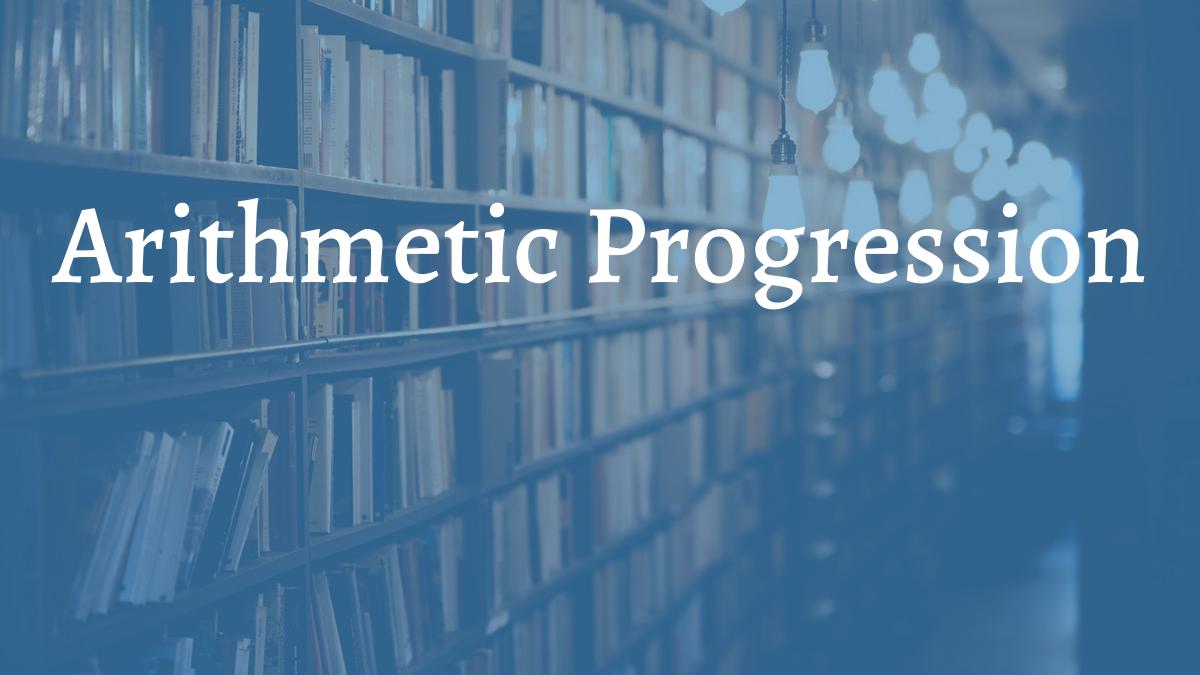Arithmetic Progression
Sequence or progression is a group of numbers forming a pattern. Arithmetic Progression (AP) is a progression in which each term, except the first, is obtained by adding a constant to the previous term.

A sequence is called an arithmetic progression, if there exists a constant d such that
a2 - a1 = d, a3 - a2 = d, a4 - a3 = d, and so on.
d is called the common difference.
Formation of AP or General form of AP: If a is the first term and d is the common difference, then AP is
a, a + d, a + 2d, a + 3d, a + 4d, and so on.
nth term: tn = a + (n - 1)d
Sum of first n terms: Sn = n/2(a + l), where
l (last term) = a + (n - 1)d, a = first term, d = common difference , n = number of terms
Sn = n/2[2a + (n - 1)d]
nth term in terms of Sn: tn = Sn - Sn-1
Various terms of AP: 3 consecutive terms are a - d, a, a + d and common difference is d. 4 consecutive terms are a - 3d, a - d, a + d, a + 3d and common difference is 2d.